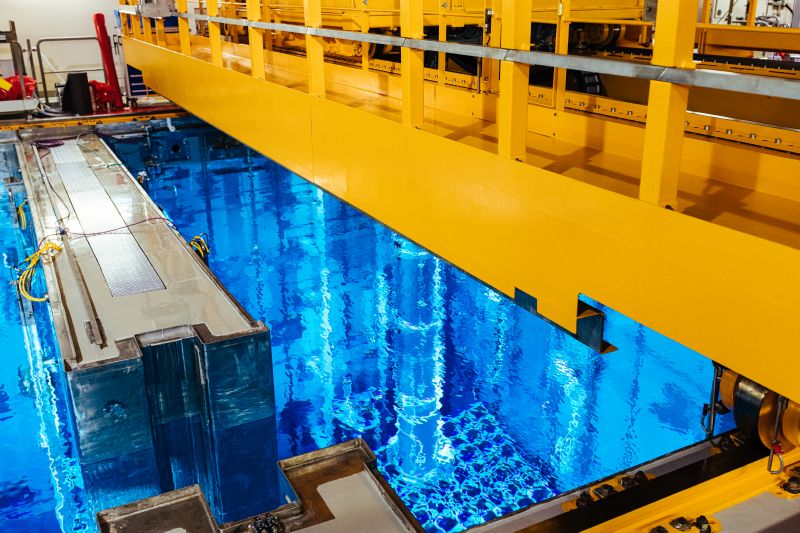How does spent nuclear fuel find its way to final disposal and what is done to it before it is deposited in bedrock?
Spent nuclear fuel is radioactive. That is why the fuel is isolated from organic nature until the activity of the fuel has decreased to a non-hazardous level. This isolation is referred to as final disposal.

For final disposal, the spent fuel is packed in final disposal canisters made from copper and cast iron. The canisters are deposited in holes drilled in the final disposal tunnels at a depth of over 400 metres. Ultimately, the tunnels will be backfilled and closed.
Final disposal is implemented in accordance with the multibarrier principle. The protective canister, the tunnel backfill materials and the bedrock restrict and slow down the release of radioactive materials from the fuel contained in the canister. Consequences to humans or the environment would be insignificant even in case the isolation capacity of some of the protective canisters was lost.
In Finland, each producer of nuclear electricity is responsible for all aspects of their nuclear waste management. Posiva, a company owned by Teollisuuden Voima and Fortum Power and Heat, carries out the final disposal of the nuclear waste generated by its owners deep in the bedrock of Olkiluoto.
From reactor to final disposal
The spent fuel assemblies are cooled in the water pools of the reactor hall at the nuclear power plant for a few years.
- After about four years, the fuel assemblies are transferred to the water pools of the interim storage located in the power plant area. In the interim storage the spent fuel is cooled for decades. The poolside areas are accessible because the volume of water above the assemblies, eight metres in height, stops radiation from the assemblies.
- After interim storage, the spent fuel assemblies are packed in impermeable protective canisters at the Olkiluoto encapsulation plant.
- The canisters are then deposited for final disposal at a depth of 400-450 metres in the bedrock of Olkiluoto. At the time of final disposal, the canister walls and a couple of metres of bedrock are enough to completely stop radiation from the assemblies.
Spent nuclear fuel is highly radioactive after use, but the activity level falls to one hundredth part in just one year. The radiation level of spent nuclear fuel decreases at a high rate during the first decades after it is removed from the reactor. By the time the final disposal of the fuel starts, 40 years later, its activity level has been reduced to just one thousandth part of the original level.
Read more at TVO - Spent nuclear fuel.Open link in a new tab
Text: Pasi Tuohimaa
Photos: Tapani Karjanlahti
Share